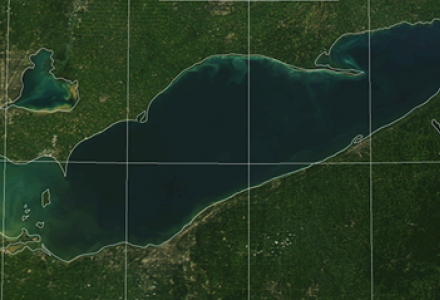
Public utilities have been referred to as “invisible networks” that are out of sight and mind until something goes wrong. Some of North America’s water delivery and wastewater collection infrastructure is aging, in disrepair and overdue for substantial reinvestment.
The US price tag for the sector has been estimated to be as high as $1 trillion over the next 25 years and communities are struggling to close the gap between investments and needs. Taxpayer funding and financing options are limited, so much of the burden will fall to utility ratepayers, raising concerns about equity and affordability.

In their development stage, the growth of many urban utility systems was assumed and planners erred on the side of extra capacity. In upgrading these systems, an assumption worth considering is whether every foot of pipe should be replaced “in kind” – foot-by-foot and diameter-by-diameter. Community water systems expanded as urban areas developed, and not necessarily according to a grand plan. Few of today’s systems would be considered optimal under the best of circumstances.
As the infrastructure grew old, something else happened. Utilities have seen a steady decline in sales as people use less water, at least indoors.
Every way we use water in our homes – from washing clothes, dishes and ourselves to flushing the toilet – is more efficient today than when water systems were built. Standards for fixtures originally meant to save energy are saving water, chemicals and other inputs. Industrial and commercial water use is also more efficient and unlike energy, there are few new uses for treated water for these arenas. Higher prices that reflect higher municipal costs to clean and provide water will cause people to reconsider their choice to water their lawns and other outdoor usage as well.
Since population served is a key driver of system design, some legacy cities face the additional challenge of population loss as well as widespread poverty. Urban systems designed for growth may have to contend with a shrinking base. Oversized infrastructure has implications for system integrity and the quality of water moving (or not moving) throughout a distribution system. Counting on future growth is not a sound basis for asset planning and management, and more thoughtful and flexible approaches are needed.
The combination of rising costs and falling demand, along with greater reliance on revenues from customers, means high rates for water service. Rate increases are never welcome, but it is important to keep in mind that the higher rate is applied to lower usage. Increased efficiency in water systems helps lower operating costs in the short term and capital costs in the long term, and the higher rate is less high because of efficiency gains. Unfortunately, efficiency gains cannot offset all of the pressure on costs related to infrastructure replacement and regulatory compliance to ensure the safety of drinking water.
Realizing efficiency gains brings us back to infrastructure and how to replace it. Communities that postponed spending need to start making critical investments, but they also may have an opportunity to revisit assumptions and rethink strategies.
Now is the time to realize the benefits of hard-fought efficiency. All utilities are exploring ways to modernize. Fortunately, modeling tools are available to optimize water systems relative to changing patterns of demand while still meeting service-level criteria. A smarter approach should lower capital and operating costs, creating healthier water systems and more affordable water service.
The bottom line? At this moment of inflection, water utilities face many challenges and a unique opportunity. Prudence calls for not building tomorrow’s infrastructure to meet yesterday’s demand.
- - -
The IJC on Infrastructure
The IJC, in its Fourteenth Biennial Report on Great Lakes Water Quality under the Great Lakes Water Quality Agreement, focused on programs to abate, control and prevent pollution from municipal sources entering the Great Lakes system. The objective was to survey existing programs aimed at controlling surface water pollution and to provide an overview of the current situation.
Recommendations regarding pollution from municipal sources included:
1. Ensure that the economic stimulus measures now being developed address wastewater system needs in the Great Lakes basin.
2. More effectively link watershed management with the permitting process for municipal and industrial dischargers.
3. Make use of third party audits to improve compliance with water quality standards or objectives in the Great Lakes.
4. Encourage the adoption of “green infrastructure” to complement traditional infrastructure investments.
Further, in its First Triennial Assessment of Progress, the IJC called on Canada and the United States to set specific timelines and targets for making critical improvements to wastewater and drinking water infrastructure, reducing nutrient runoff and eliminating releases of chemicals of mutual concern.
To achieve human health objectives of the Agreement for drinkable, swimmable and fishable waters, the IJC also recommended that the governments increase funding for infrastructure and provide support to communities to improve their capacity to respond to extreme storm events, especially as related to combined sewer overflows.

Janice Beecher is director of the Institute of Public Utilities at Michigan State University. She specializes in utility regulation and the water sector.




